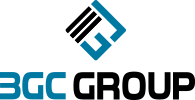Moving into 2021, the torrential storm of 2020 is turning into downpour with signs of the sun coming out again, and it’s time to take a look at the new landscape of technology today.
Over the last year, the emergency lock down, work from home policies that governments mandated, forced many companies to rapidly rethink what technologies mattered most. While telecommuting has long been a slowly growing phenomenon, Covid changed preconceptions of what could be a telecommuting role and what roles required an in office or on-site presence. Email and phone are no longer the primary communication, collaboration, and connection tools that are the most effective. There are a myriad of tools used today to help employees be more effective.
While Zoom and MS Teams are the big gorillas in the room when it comes to the dramatic changes companies are seeing in communication tools, Salesforce, SugarCRM, NetSuite, Slack, Confluence, Trello, Monday, Jira, SmartSheet, and many more tools all grew rapidly in importance over the past year as critical platforms to help employees connect.
Companies across all industries had to accommodate new work from home strategies for a much larger percentage of staff, and this raised the need to make sure internet connections were up and all staff had the needed tools to be productive and effective in their roles.
Now, as we move into 2021, there's a new issue that has emerged. The new concerns and anxieties that we live with in this changing landscape means companies can't simply go from revert to bringing all the staff who began to work from home back to the office. That means a hybrid strategy must be put in place for an effective workforce. New policies will have an environment that deals with telecommuters and on-site staff, even within departments, and with this new mix of onsite and home staff, digital tools will need to work seamlessly, for communication and collaboration within each department, across departments, and with the outside world.
In other words, how companies implement new communication, collaboration, and connection tools to create and maintain an effective and productive workforce.

The figure above is a great perspective and shows a change we're seeing in how companies plan and implement new communication, collaboration, and connection technologies. Traditionally, companies mandated a limited set of tools without taking into account how to optimize each staff person’s ability to work effectively within each role. It was an orthodox and cookie cutter perspective on how to provide communication, collaboration, and connecting tools.
But that's changing today, and many companies now start with a view of the individual first. Starting with each individual's role and needs and then working outwards. The initial question starts with "how do we get the individual to connect, communicate, and collaborate effectively". The next is to start looking at tools available and see what each individual is able to effectively use. Then comes a verification step, looking at the impact of governance, risk, compliance of the tools. And if all of this is done well, companies will experience real-world results that will far exceed traditional communication platforms. All of this translates to improved speed, accuracy, and employee satisfaction, which in turn can have a visible positive effect on overall revenue and cost savings. we're seeing this change across multiple changes.
To achieve this level of optimization is not a single implementation. Rather, it's an iterative process. And the spark that drives this continuous improvement is the KPI.
When putting a digital workplace optimization strategy together, a lot of things will be new. There is a certain amount of education and guesswork involved in making strategy decisions. And that means measuring the success of those solutions and making modifications and adjustments over time. While anything can be measured, a KPI measures against a threshold and a goal. A KPI shows whether new implementations are successful or not. Implementing new tools can have unexpected effects, positive or negative on other parts of the organization.

The figure above shows four types of KPIs. The very base level of KPIs are fundamentals well known in the IT world. The highest level of KPIs have long been familiar to executives, like revenue, profit, COGS, HR employee satisfaction, etc. But the two KPI types in the middle, these are companies need to start looking at now to complete a successful digital workplace implementation.
The second layer is adoption KPIs and this is really measuring against thresholds over time. When purchasing Zoom or MS teams, making sure employees are actually using the platform is critical. Are employees using the platform more or less? Is usage of the new platform having an effect on another platform? It may be possible to reduce usage and costs of other platforms.
Insight KPIs are just as critical in measuring the success of implementing new communication, collaboration, and connection tools. These KPIs focus on how departments are performing vs. goals. While not a direct measurement of technology implementations, these types of department focused KPIs show immediate real-world improvements and impact decisions on making adjustments and fine tuning the digital workplace strategy.
Covid has taught us so much about how technologies can be road-mapped, implemented, and maintained. As we move into 2021 and beyond, successful technology teams and leaders will incorporate the speed of Covid era technology implementations into strategies going forward.







Comments